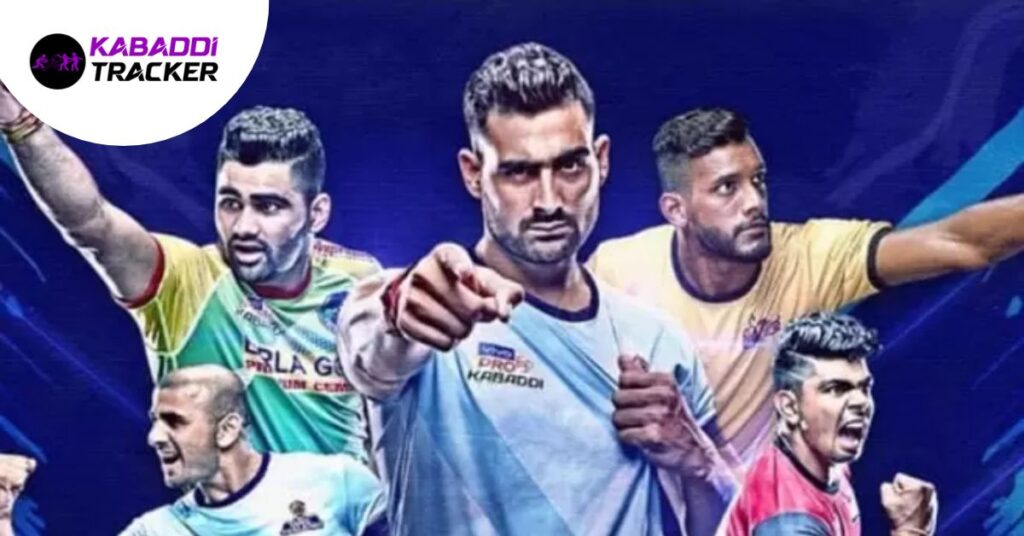Kabaddi is a unique sport with its roots deeply embedded in South Asian culture. While gaining global recognition in recent years, it still remains a mystery to many. One of the most common questions asked by newcomers to the sport is how many players make up a Kabaddi team. Is it akin to soccer, with eleven players per side, or more similar to basketball, with just five players?
In this article, we will explore the intricacies of Kabaddi, including its distinct rules and the crucial role of each player on the team. Get ready to uncover the secrets of Kabaddi and understand why it is quickly becoming one of the world’s most thrilling sports.
How Many Players in a Kabaddi Team
In Kabaddi, each team consists of seven players on the court at any given time. Yes, you read that correctly—only seven players! But don’t be fooled by the small number; Kabaddi is a high-octane sport that demands remarkable athleticism and strategy.
Kabaddi Team Composition

Kabaddi is undoubtedly a team sport, with each team comprising a total of 12 players. However, only seven players are allowed on the court simultaneously. The remaining five players serve as substitutes who can be called upon if a player is injured or needs a rest. The decision regarding which players will be on the court at any given time rests with the coach.
Understanding the Basics of Kabaddi
Kabaddi is a full-contact sport that originated in India. Played on a rectangular court measuring 13 meters by 10 meters, each team fields seven players during a match. The primary objective is for the “raider” to venture into the opposing team’s half, tag as many players as possible, and return to their side without being tackled. The defenders on the opposing team must thwart the raider’s advance by tackling them before they can retreat to their own half.
Also Read – Top 10 Raiders in Pro Kabaddi League History
The game unfolds in two halves, each lasting 20 minutes, separated by a five-minute break. Victory goes to the team that amasses more points by the end of the match.
The Roles of Players in Kabaddi
Each player on a Kabaddi team plays a specific role. The raider holds the most pivotal position, responsible for accumulating points by tagging as many defenders as possible. Working in tandem, the stoppers and cover defenders aim to foil the rival team’s raider. The stoppers focus on tackling the raider, while the cover defenders provide crucial support to prevent the raider from escaping.
To excel in Kabaddi, raiders must possess quickness, agility, and impeccable reflexes. They must think on their feet and devise strategies to outwit the defenders. In contrast, stoppers and cover defenders need strength, speed, and robust stamina. Effective teamwork and communication are essential as they strive to stop the opponent’s raider.
Kabaddi Team Formations
Kabaddi teams employ various formations depending on the situation. The most common formation is the 3-3-1 setup, featuring three stoppers, three cover defenders, and one raider on the court simultaneously. Nevertheless, teams can opt for other formations such as the 2-4-1 or 4-2-1 based on their players’ strengths, weaknesses, and strategic objectives.
Also Read – Pro Kabaddi Season 5 Full Match Schedule and Highlights
The 3-3-1 formation is favored for its balance, evenly distributing stoppers, cover defenders, and raiders on the court. However, teams may opt for different setups as the situation demands.
International Kabaddi Competitions

Kabaddi has transcended its South Asian origins, gaining international prominence in recent years. A prime showcase of this is the Kabaddi World Cup, held every four years. This prestigious event features teams from around the globe, including traditional powerhouses like India and Pakistan, as well as emerging contenders such as Iran and South Korea.
The Kabaddi World Cup serves as an invaluable platform for Kabaddi players to display their talents on the global stage. It also grants fans worldwide the opportunity to witness the finest Kabaddi players in action.
Famous Kabaddi Teams and Players

Within the world of Kabaddi, several teams and players have earned renown. Among them, the Patna Pirates stand out as one of the sport’s most illustrious teams, securing victory in the Pro Kabaddi League on three occasions. The Telugu Titans are another celebrated outfit, reaching the final of the Pro Kabaddi League twice.
Individual Kabaddi players have also carved their names into the annals of the sport. Anup Kumar, acclaimed as one of the world’s premier raiders, has left an indelible mark on Kabaddi. Likewise, Manjeet Chhillar is renowned for his stellar defensive prowess. These luminaries have inspired a new generation of Kabaddi enthusiasts, playing a pivotal role in popularizing the sport across the globe.
Common Misconceptions About Kabaddi Team Composition
Despite its growing global recognition, several misconceptions persist regarding Kabaddi team composition. One such misunderstanding is the belief that each team comprises just five players. This misconception often arises from comparisons with other sports like basketball and soccer, which feature five and eleven players per team, respectively.
Another prevalent misperception is that only the raider can score points. While the raider indeed holds a pivotal role in accumulating points, the stoppers and cover defenders also have opportunities to contribute by tackling the opposing team’s raider.
Also Read – PKL MVP Rohit Kumar: From Dream to TV Star
Kabaddi, with its unique blend of athleticism, strategy, and teamwork, is rapidly capturing the hearts of sports enthusiasts worldwide. Despite having only seven players on each team at a time, this high-intensity sport demands exceptional skill and finesse. In Kabaddi, every player has a distinct role, and their synergy on the court is pivotal to outmaneuvering the opposition and securing victory.
Whether you’re a seasoned Kabaddi aficionado or a newcomer to the sport, understanding the intricacies of Kabaddi team composition and the specific roles each player fulfills enhances your appreciation for this exhilarating game. As you watch a Kabaddi match, keep an eye on the raider’s lightning-quick maneuvers, the stoppers’ robust tackles, and the cover defenders’ seamless coordination. Witness the ever-evolving formations and strategies that teams employ to gain an edge over their rivals. Kabaddi, with its rich history and thrilling gameplay, is undoubtedly poised for a bright and exciting future on the global sports stage.



